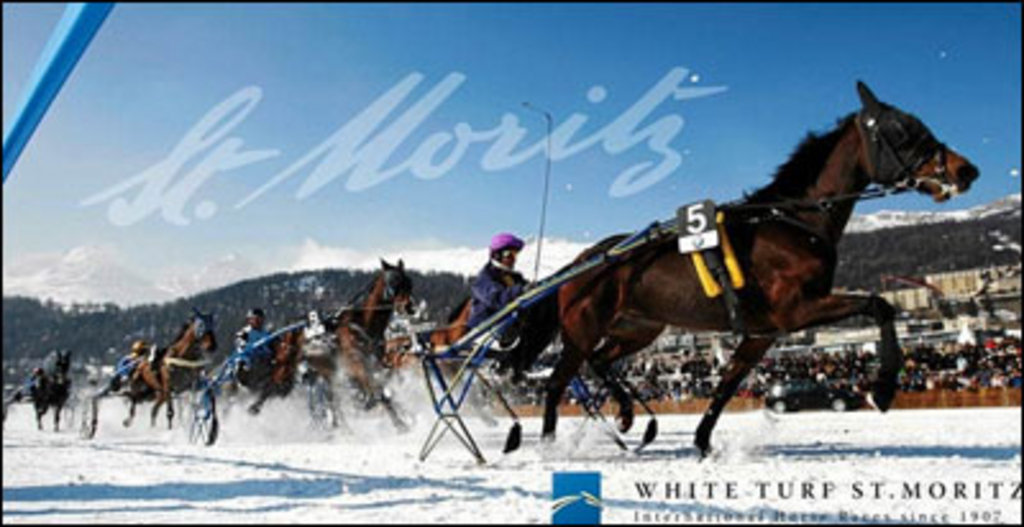
A few months ago I wrote in this column about trotting in the Czech Republic while at the Prix d’Amerique in France earlier this year. I also had a chance that night to learn more about racing in...Switzerland?
Yes, Switzerland is famous for its Alps and also famous for maintaining neutrality during wars because the Swiss Army is equipped with clever little knives that deter tanks and rocket launchers.
Switzerland is not famous for horse racing, but it does boast of the famous White Turf at the resort town of St. Moritz in which races are held over a frozen lake. The races have Thoroughbreds and trotters pulling sulkies fitted with ski runners. There are even races in which horses pull skiers behind them.
These races, as you might expect, are held in winter (February) when the mountains surrounding St. Moritz are covered with snow, as is the countryside. It makes for a fairytale alpine setting.
Horses first competed over the lake at St. Moritz in 1907, so this tradition is now more than a century old. Crowds now range up to 30,000 people.
The White Turf at St. Moritz is more than just a series of races. It’s an event with cocktails parties, music, and fine continental cuisine. The photos I’ve seen of the trotting races at St. Moritz are absolutely captivating. I’d love to experience it first-hand someday.
Not all the races are contested on the ice, of course. Since Switzerland shares a border with France, Italy, Germany and Austria - all countries with trotting programs – it shouldn’t be surprising to learn that trotting has a foothold in the Alps, too.
The newest track in the country is at Avenches in the west central section. It was built in 1999. Trotting races are held over a track that measures 1425 meters or just about 7/8-mile. By contrast, the Thoroughbred races at Avenches are contested over a track that is 1670 meters or a little more than a mile.
There are also tracks in Aarau, Arosa, Basel, Fehraltorf, Frauenfeld, Lucerne, Maienfeld, Saignelegier, and Zurich. Most of them host both trotting and Thoroughbred racing and some stage steeplechase and show jumping, too. Most have a very limited racing schedule during the year; there are only 50 racing programs in the year. There is, of course, betting.
Some tracks are "corde a gauche" which means the horses have left-hand turns as they do in North America, but several are "corde a droite" which means that the horse race clockwise around right-hand turns.
Switzerland is a picturebook country, of course, and I’d love to see some trotting races there. And since the world is constantly in turmoil and vulnerable to war, I’d feel safe in a nation that secures its borders with soldiers armed with those handy little knives.
Trotting in Switzerland - who would have given it much thought?
Dean Hoffman, one of North America's most prolific harness racing journalists and member of the U.S. Harness Racing Hall of Fame, offers SC website readers his weekly look at international standardbred racing through his eyes.

